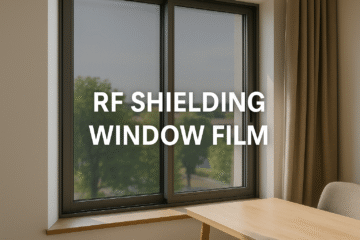As more people strive to reduce electromagnetic field (EMF) exposure in their homes, attention has turned to often-overlooked entry points for radiation—windows. Glass, while beautiful and open, can also act as a gateway for Wi-Fi, 5G, and radiofrequency signals. EMF shielding window blinds offer a practical and attractive way to block or reflect unwanted electromagnetic energy while maintaining comfort and style.
What Are EMF Shielding Window Blinds?
EMF shielding blinds look and function like traditional window coverings, but they’re made from conductive materials such as silver-coated fabrics, stainless steel mesh, or carbon-infused textiles. These specialized materials reflect or absorb electromagnetic radiation, reducing its penetration into indoor spaces.
They can be installed in bedrooms, offices, or living areas to create a more controlled, low-EMF environment—particularly valuable for those living near cell towers or high-density Wi-Fi zones.
How They Work
The principle is similar to a Faraday shield. The blinds’ woven metallic fibers form a conductive surface that reflects and redistributes incoming electromagnetic fields. When properly installed and optionally grounded, the blinds can block both RF (radiofrequency) and EF (electric field) radiation from entering through windows.
Shielding performance depends on:
- Material composition
- Weave density
- Grounding quality
- Installation coverage (side gaps and overlaps)
Key Materials Used in EMF Shielding Blinds
| Material | Description | Typical Attenuation |
|---|---|---|
| Silver-Coated Fabric | Excellent conductivity; soft and luxurious look | 30–50 dB |
| Stainless Steel Mesh | Highly durable and easy to clean | 40–60 dB |
| Carbon Fiber Weave | Lightweight and non-metallic | 20–35 dB |
| Copper-Infused Fabric | Strong reflection of EMF, stylish warm tone | 25–45 dB |
The higher the decibel (dB) rating, the greater the shielding capability—each 10 dB represents a tenfold reduction in signal strength.
Benefits of EMF Shielding Window Blinds
- Reduce RF and EMF Exposure: Especially helpful if your windows face a cell tower or smart meter.
- Preserve Aesthetics: Modern designs resemble regular blinds or curtains and blend seamlessly with décor.
- Temperature and Light Control: Metallic fabrics often add thermal reflection, keeping rooms cooler.
- Privacy Enhancement: Metallic mesh designs provide visual privacy from the outside.
- Custom Fit Options: Can be made to order for standard or specialty windows.
Comparison Table: Popular EMF Shielding Window Blind Options
| Brand / Product | Material | Shielding Rating | Grounding | Approx. Price |
|---|---|---|---|---|
| YShield Steel-Tex Blinds | Stainless steel fiber | 50 dB | Optional | $200–$500 per window |
| LessEMF High Shield Roll-Up | Silver/copper fabric | 40 dB | No | $150–$400 |
| Swiss Shield Naturell Roller | Semi-transparent polyester with silver coating | 30 dB | No | $250–$600 |
| DefenderShield EMF Window Cover | Aluminum-backed fabric | 35–45 dB | No | $180–$350 |
These represent reliable brands frequently used in low-EMF home installations and wellness-oriented remodels.
Installation Tips for Maximum Shielding
- Cover fully: Ensure the blinds cover the entire glass area with overlap on the frame edges.
- Avoid gaps: Light leaks often mean EMF leaks—fit tightly to the wall or frame.
- Optional grounding: For electric field reduction, connect grounding wire to a grounded outlet.
- Pair with shielding paint: Combine window blinds with EMF shielding paint or curtains for holistic room protection.
- Test the results: Use an EMF meter to measure field strength before and after installation.
Practical Applications
- Bedrooms: For creating low-EMF sleep environments.
- Home Offices: To protect from Wi-Fi and 5G signals while working.
- Apartments & Condos: Ideal where routers or antennas are close by.
- Smart Homes: Reduces overall exposure without disabling convenience devices.
Common Mistakes to Avoid
- Choosing thin decorative fabrics: Not all metallic sheens provide real EMF attenuation.
- Leaving side gaps: EMF can easily bypass open edges.
- Neglecting other surfaces: Walls, ceilings, and floors may still transmit EMF.
- Assuming total protection: These products reduce exposure, not eliminate it entirely.
Key Takeaways
- EMF shielding window blinds combine design and protection, reducing exposure from Wi-Fi, 5G, and other radiofrequency sources.
- The best options use conductive fabrics like silver, copper, or stainless steel and may offer up to 99% signal attenuation.
- Use alongside other protective measures—shielding paint, canopies, and mattress toppers—to create a low-radiation sanctuary.

